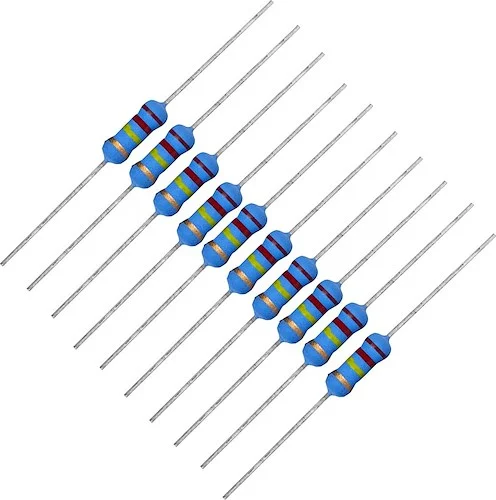220K 1W Metal Oxide Resistor - Pack Of 10


Price: $13.99
Qty: 2+ Price: $12.30 each
Ships FREE within 1-15 Days
In Stock
Financing Available: Learn More
Product Description
Metal Oxide Resistors Metal-oxide film resistors are fixed form, axial resistors. They are made of ceramic rod that is coated with a thin film of metal oxides, such as tin oxide. Metal oxide film resistors must not be confused with metal oxide varistors, made of zinc oxide or silicon carbide. Properties Metal oxide film resistors exceed the performance of metal film and carbon film for the following properties: power rating, voltage rating, overload capabilities, surges and high temperatures. Designers choose often the metal oxide film resistor for high endurance applications. For an overview of resistor types with their properties, look here. Stability properties are less good than for the metal film resistor. The metal oxide film resistors have poor properties for low values and tolerance. The temperature coefficient is around 300 ppm/°C, which is higher than for metal film types. The resistance material for metal oxide resistors is tin oxide that is contaminated with antimony oxide, this is to increase the resistivity. Metal oxide resistors can withstand higher temperatures than carbon or metal film resistors. The noise properties are similar to carbon resistors. Application Many properties of metal oxide film resistors are similar to metal film resistors. For basic use, metal film and metal oxide film are currently the predominant resistor types. Compared to carbon film, the prices are just as low. Only for dissipation values above 1 watt combined with reasonable stability, the carbon film resistors are still more cost efficient. Construction The metal oxide film is mostly produced with chemical deposition methods. Almost always a ceramic carrier is used as substrate. The deposition process involves the reaction of a pure metal with a gas at high temperature and at a low pressure. A very common metal oxide film is tin oxide. The film is established by heating the resistor body in a tin chloride vapor. Other metal oxide films have usually a different deposition process. Firstly a thin metal film is applied, which is afterwards reacted with oxygen. The desired composition is achieved by measuring the resistance of a test piece. After the film is applied to the resistor body, the final resistance value is achieved by applying a helical cut. This is usually done by laser cutting, while in the past it was done by grinding or sandblasting. The spiral cut makes the resistance path longer and of smaller cross section, and can increase the resistance value up to thousand times greater than before the cut. The resistance value can be accurately controlled by the cutting. During the cutting process, the resistance is measured to allow for small corrections.